Vehicles, like horses, can be unpredictable, which is why it’s so important to follow the rules when riding or leading your horse on the road.
The Highway Code lays down specific requirements for riders, carriage drivers and vehicle drivers; when everyone follows this framework it significantly reduces the chances of collisions and casualties.
Unfortunately, this isn’t always the case.
According to the British Horse Society (BHS), riders and their animals are some of the most vulnerable road users: year after year, significant numbers of incidents occur between vehicles and horses – this is why it’s essential to secure reliable cover.
You’ll be in good hands with Equesure, whether you’re a frequent or occasional rider.
We offer bespoke horse rider insurance, so that you have peace of mind that you’re protected – on and off the road. Our packages can include personal accident cover up to £20,000, as well as public liability cover.
While this guide cannot be deemed legal advice, we want to help you stay safe on the road, so let’s get started.
The stats
Figures released by the BHS paint a worrying picture of incidents between vehicles and horses.
Bearing in mind only one in 10 incidents are reported to BHS, these figures could easily be even more troubling.
Between November 2010 and March 2019:
- 315 equines died
- 43 humans were killed
- 3,737 road incidents were reported
- 73% of incidents occurred due to cars passing too closely
- 31% of incidents were caused by cars passing too rapidly
- 32% of riders reported experiencing abuse or road rage
It's clear this problem isn’t going away: between 1st March 2018 and 28th February 2019, 845 incidents were reported to the BHS.
More than a quarter of equestrians reported experiencing abuse or road rage.
Every time you go out on the road with your horse, it’s vital to remember these statistics, as not all drivers will act responsibly.
Likewise, it’s your duty to stay within the law when riding on the road, learning the Highway Code, using the correct kit and following the rules at all times.
Horses are ‘flight’ animals. This means they can become easily scared and act unpredictably. The most experienced rider will have trouble controlling a horse spooked by a speeding car.
Equines in this situation will intuitively run away from the source of fear as fast as possible.
Unfortunately, this could take riders right into the path of traffic – this is why reliable horse rider insurance is so important.
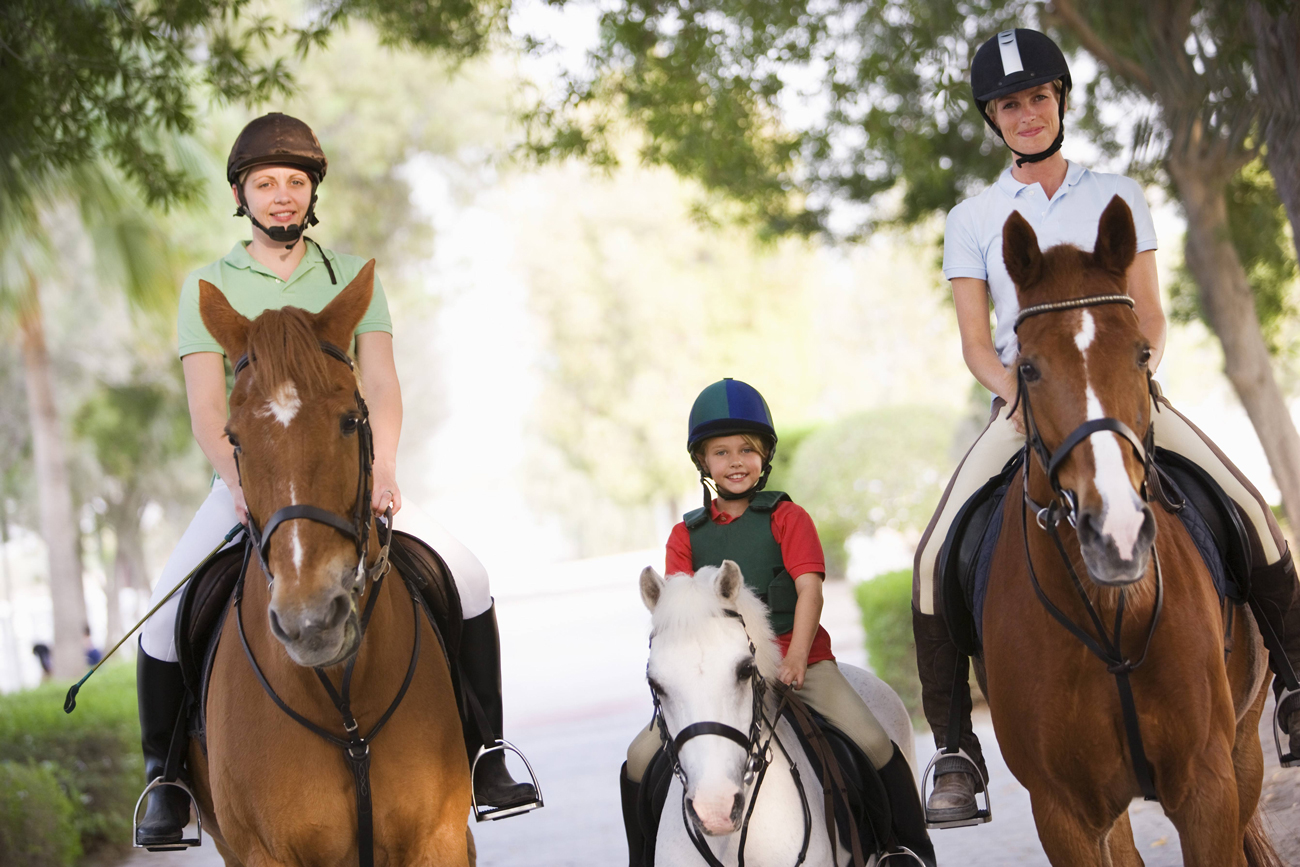
What does the Highway Code say about horse riding?
It should be noted: when we talk about the ‘road’, bridleways, footpaths, cycle tracks and many driveways/roadways situated on private property can fall into this category.
While the law applies to all of these types of road, additional rules might apply to specific paths and rights of way.
The Highway Code includes everything you need to know about riding your horse, on byways or highways.
It lists:
- The rules you’ll need to adhere to
- The clothing/headgear you’re required to wear
- Road signs you need to know about
- Hand signals you must use
- The way in which you should use crossings
- Codes of practice
- Traffic laws
- Advice for riding on roads
- Advice for drivers
We’ll be focusing on the advice and rules that apply to horse riders and owners travelling on UK roads. You should also make sure you have your own, up to date copy of the Highway Code.
Time to take a closer look at the rules detailed in the Highway Code…
What safety kit do I need when riding on roads?
When out and about on four-legged friends, children younger than 14 years of age must wear a helmet.
The helmet must meet the approved standards and be fastened securely to the wearer (children who are members of the Sikh faith do not have to follow this rule while wearing turbans).
Riders older than 14 years old are also expected to wear helmets when riding. All riders are required to wear footwear with hard heels or soles, as well as fluorescent or lightly coloured clothing during the daytime.
When riding in poor visibility or during the night, riders must wear reflective clothing.
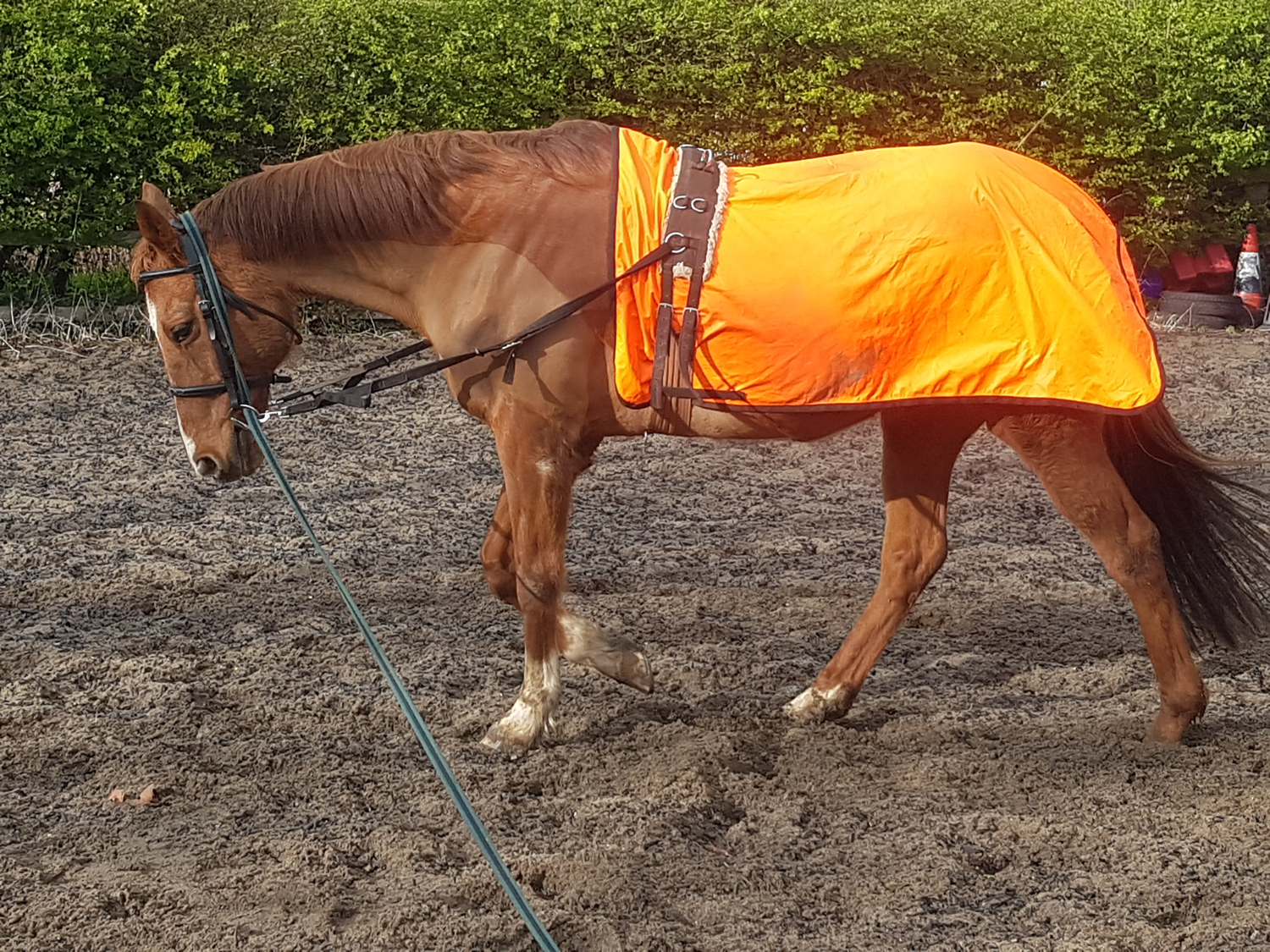
Can I ride my horse at night?
It’s not recommended to ride in poor visibility or during the night, but if you choose to, you’ll need to do more than wear reflective clothing.
When riding, you must make sure a light that shines white at the front and red at the back is secured to your right arm and/or your riding boot/leg, using a band to keep it in place.
Your equine must have reflective bands fitted above their fetlock joints.
When leading, you must hold a light in your right hand, shining white at the front and red at the back.
Both you and your horse should wear reflective clothing, and it’s strongly advised that you also attach a reflective/fluorescent tail guard to your pony.
What do I need to do before riding on the road?
Before you and your equine hit the road, you must make sure all tack fits your horse well and is in an acceptable condition.
You should not take your horse out on the road unless you’re confident you can control it.
It’s best to ride with other, more confident equines if your horse is anxious around traffic. Never go riding without both a bridle and saddle.
When do I use arm signals?
Before you turn or ride anywhere, check behind you, ensuring it’s safe to move, following this with a clear arm signal.
When you go riding on roads you must:
- Keep both of your feet in the stirrups
- Keep to the left-hand side
- Keep an equine you’re leading to the left-hand side
- Hold the reins with both hands, except in the event of signalling
- Not transport another person on your equine
- Not transport anything that could impact your balance or obstruct the reins
- Follow the direction of traffic flow when you’re on a one-way street
- Ride in single file when on busy/narrow roads or when turning corners
- Never ride with more than one additional rider by your side
Can I ride my horse on all roads?
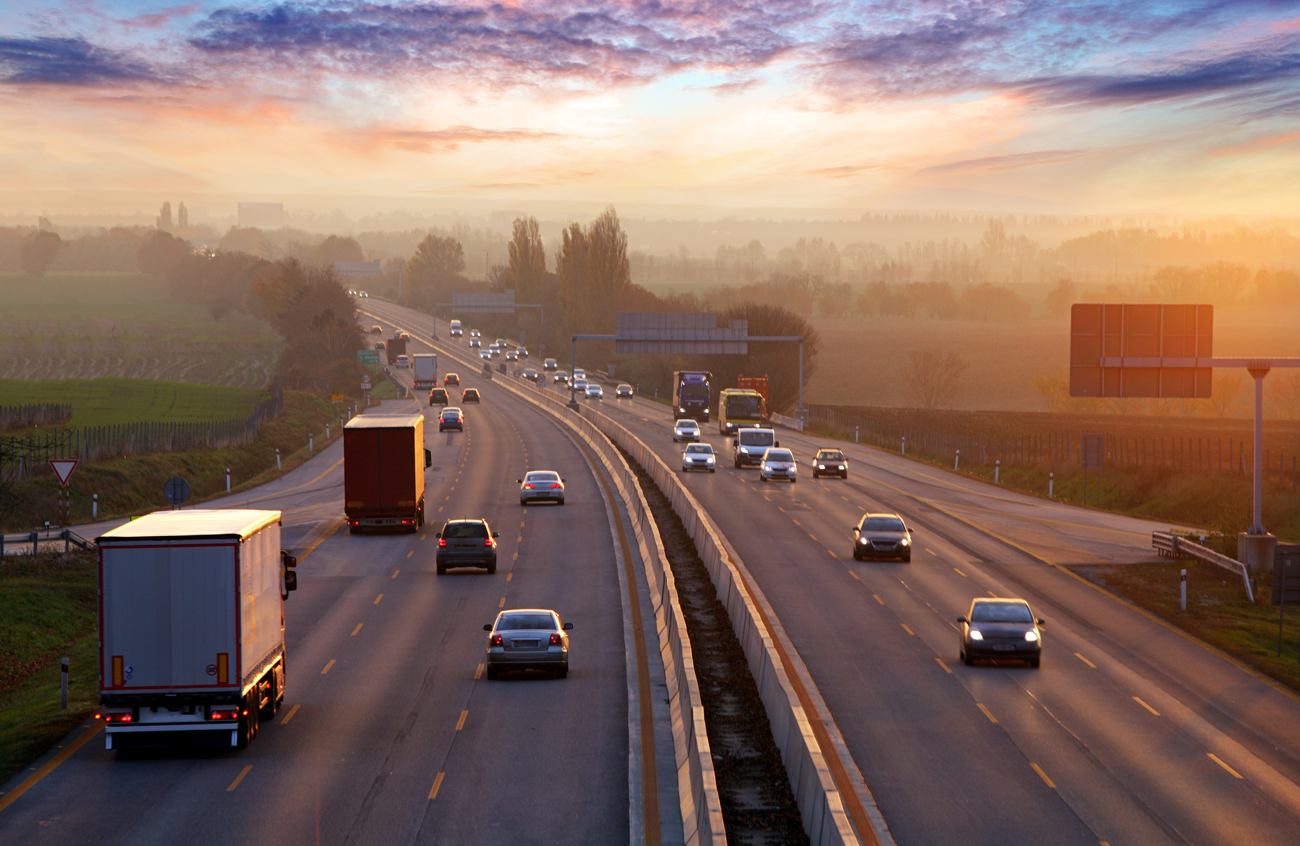
You should never ride or lead a horse on a pavement or footpath, nor should you take your equine onto cycle tracks. You are not allowed to ride a horse on a motorway.
It’s preferable to use a bridleway, when you can. You may encounter equestrian crossings, which facilitate horse riders crossing the road – you’re asked to use these whenever possible.
These crossings are wider, have pavement barriers and are highlighted by horse and rider figures featured in light panels.
They include either two sets of controls (one in a higher position) or one single higher control, to be used by equestrians.
You must dismount when you reach level crossings marked with a ‘horse rider dismount’ sign.
Can I use roundabouts when horse riding?
Try to avoid using roundabouts. If you have to use one, keep to the left and stay extra alert, looking out for oncoming vehicles joining or leaving the roundabout.
Use your arm to signal right when crossing exits, to let drivers know you’re not leaving; signal left just before you leave the roundabout.
What rules apply to horse-drawn vehicles?
If you’re operating a horse-drawn vehicle on a highway, it must follow the standards set out in the Code of Practice for Horse-Drawn Vehicles, released by the Department for Transport – the code lays out how the vehicle should be maintained and operated.
It also stipulates the terms of the required road driving assessment, alongside a list of safety checks used to confirm carriages are in adequate working order, with safe fittings.
If the operator of the horse-drawn vehicle wishes to apply for a Local Authority licence (enabling them to carry passengers), the Local Authority may ask them to meet the standards outlined in the Department for Transport’s road driving assessment.
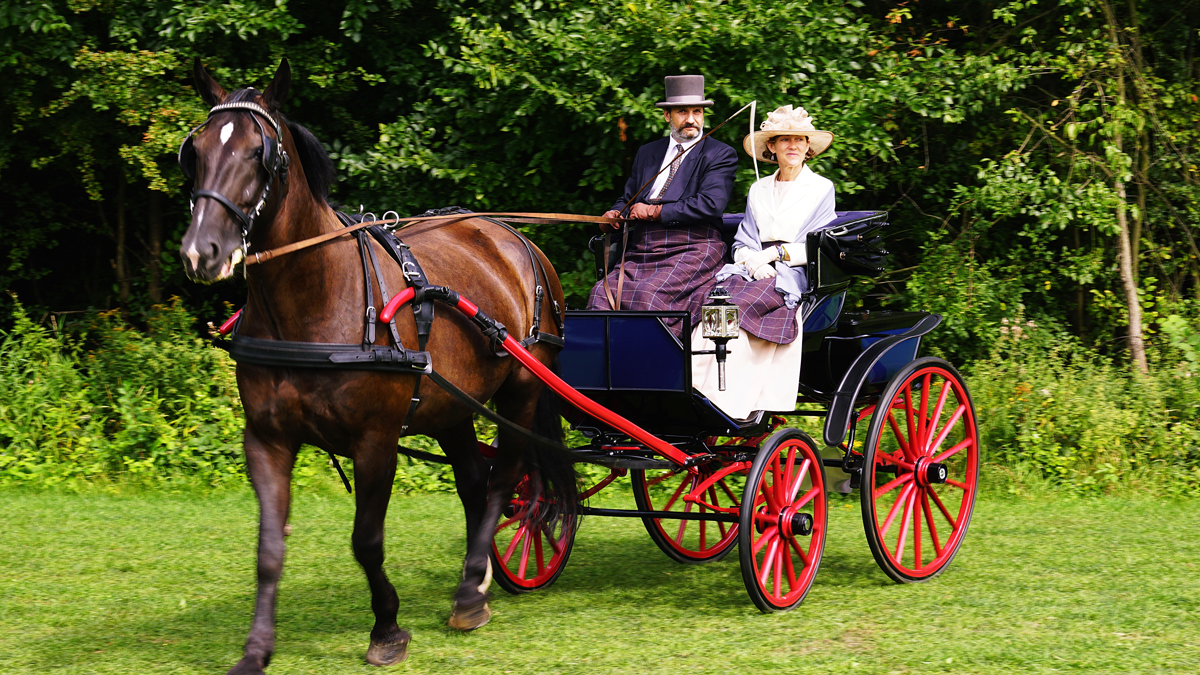
Can I use a horse-drawn vehicle at night?
While it’s not recommended to drive horse-drawn vehicles at night, if you do, your carriage must be fitted with a light that shines white at the front and red at the back, as well as two red rear reflectors.
What laws do drivers have to follow around horses?
While you should try to steer clear of fast or busy roads, there may be times when you encounter drivers.
Following the Highway Code helps keep you safe, but you should always maintain total focus on the road ahead of you and avoid getting distracted.
As a horse rider or owner, it’s also incredibly useful to know what’s expected of drivers, if they meet your horse on the road.
Once you understand what protocols should be followed on both sides, it’s easier to predict what a driver’s next move will be, minimising the chance of a collision.
By law, drivers are required to be extra vigilant around horse-drawn vehicles and riders, particularly when overtaking. They must pass slowly, leaving a wide space between the equine and their vehicle.
They are obliged to look out for any signals given by horse drivers or riders and adhere to any requests to stop or slow down.
When they encounter a horse, most responsible drivers will also:
- Decrease their speed considerably and get ready to come to a halt – the BHS recommends that drivers slow down to a maximum speed of 15mph
- Leave about a car’s width of space (if possible) between them and you
- Avoid taking actions that risk spooking your horse, such as beeping horns, revving engines or splashing puddles
- Gently increase speed once they’re clear of you and your horse
If possible, it’s nice to thank courteous drivers with a smile or a nod, letting them know you appreciate their patience.
However, safety comes first, so if your hands are full or you’re too nervous to do so, don’t.
Stay cautious
It’s always best to plan your routes in advance, steering clear of busy areas.
You should never assume drivers would slow down – or act responsibly.
Cover yourself with dependable horse rider insurance and always stay on your guard – your equine isn’t the only unpredictable factor when out on the roads.
You may use the same roads on a frequent basis, but don’t allow yourself to be lulled into a false sense of security.
Drivers who don’t know the local area may be unaware that riders use certain roads.
In addition to this, you can never rule out the chance of encountering someone driving while they’re impaired – this could be through no fault of their own, as medical issues can arise out of the blue.
10 top tips on road safety for riders and carriage drivers
- Unless you have no choice, avoid riding in darkness, fog, poor light, snow or ice
- Check the weather forecast before you hack out
- Don’t ride on roads until you’re fully confident doing so
- Wear a top-quality helmet
- Be courteous to drivers, thanking them if possible
- Always focus on your surroundings, staying aware of any changes
- Give clear, confident arm signals
- Follow the Highway Code at all times
- Make sure you and your horse are dressed in high-visibility clothing, no matter what the weather
- Always bring a fully-charged phone with you
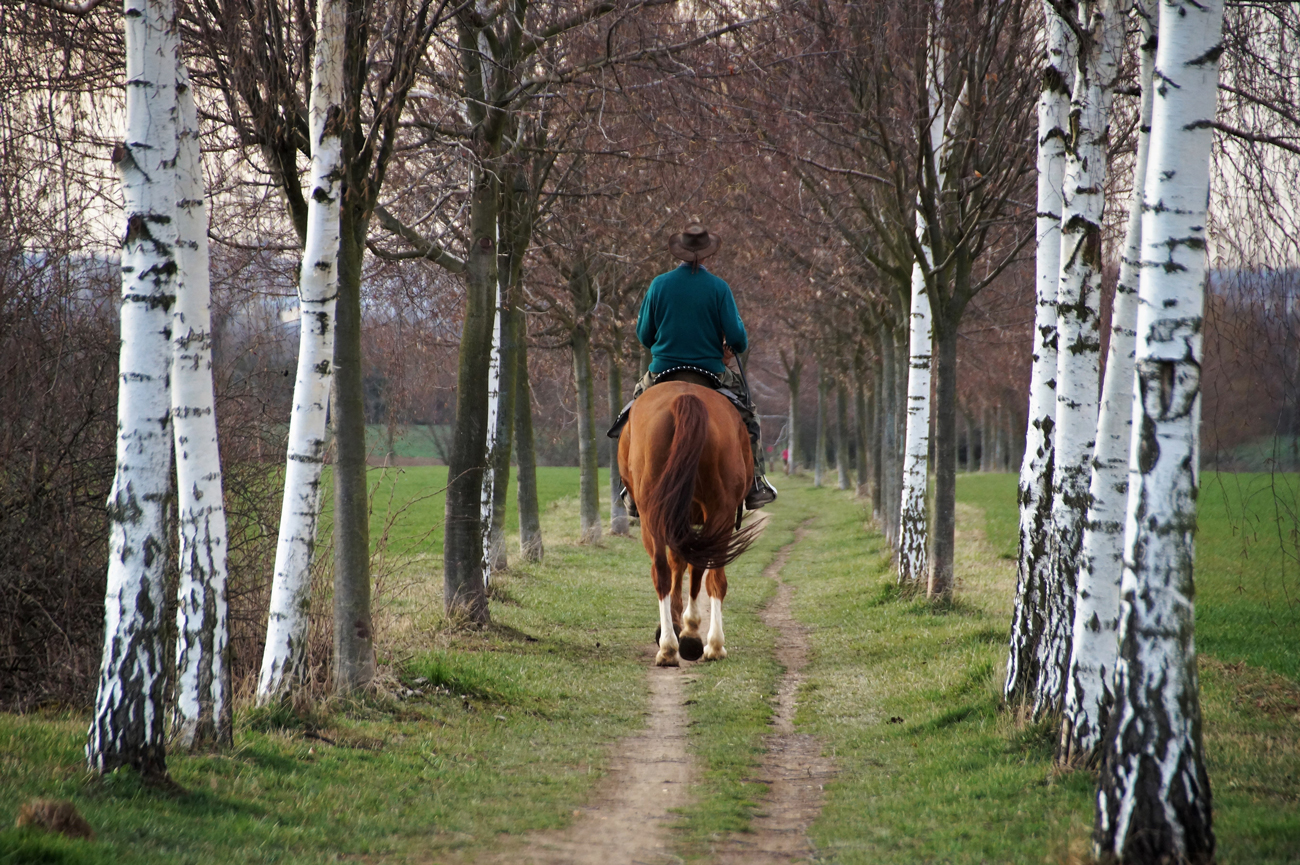
Protecting your future
Here at Equesure, we know how rewarding horse riding can be. However, the risks cannot be ignored, so it’s essential to protect yourself with reliable horse rider insurance.
Equesure has over 60 years’ experience providing specialist cover. Working with our trusted panel of insurers, we offer bespoke horse rider insurance policies, tailored to each individual’s specific needs.
As well as protecting you, we can arrange for emergency vet fees to be included in your package, up to the value of £1,500.
Our cover can also include features and benefits such as:
- Personal dental treatment cover, up to £2,000
- Saddlery and tack cover, up to £1,000
- School fees
- Custodial liability
Enjoy many more adventures with your four-legged friend and get a quote today.








